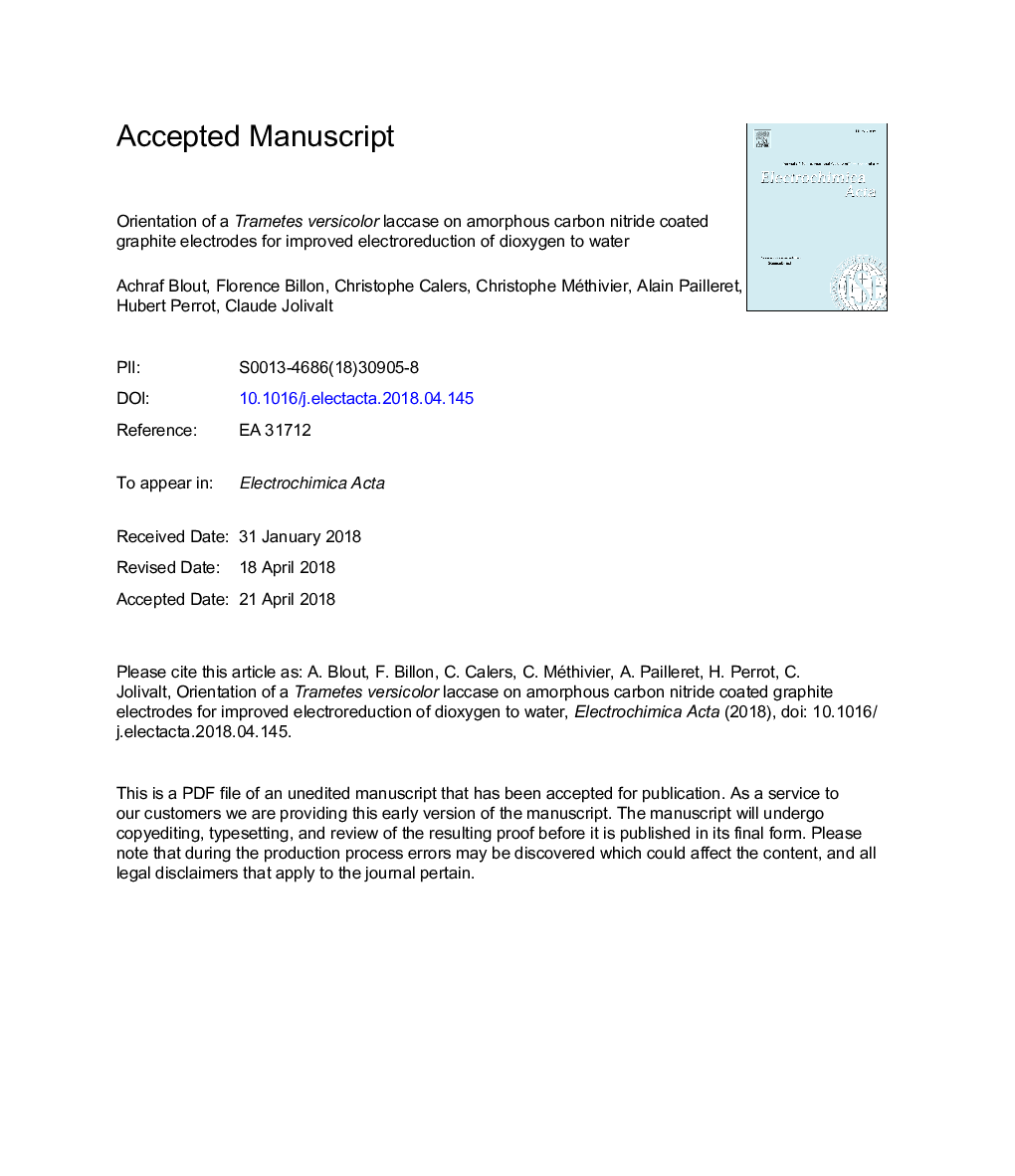| Article ID | Journal | Published Year | Pages | File Type |
|---|---|---|---|---|
| 6602781 | Electrochimica Acta | 2018 | 42 Pages |
Abstract
In parallel, the surface coverage rate of enzymes showing such activity was estimated as a function of the immobilisation method by using four different techniques (current density, activity towards ABTS, XPS and AFM). It was found that only a small fraction (7.1% to the most) of the electrode surface is covered with active enzymes, whatever the immobilisation method, whereas an enzyme population corresponding (almost) to a full enzyme monolayer was actually immobilised. This observation is crucial because it strongly suggests that the development of innovative immobilisation strategies allowing an increase of the active enzyme fraction through a simultaneous optimisation of the bioelectrocatalytic activity of the enzyme and of its electronic communication with the electrode offers much more promising perspectives than the control of the orientation of the immobilised enzyme population on its own.
Related Topics
Physical Sciences and Engineering
Chemical Engineering
Chemical Engineering (General)
Authors
Achraf Blout, Florence Billon, Christophe Calers, Christophe Méthivier, Alain Pailleret, Hubert Perrot, Claude Jolivalt,
